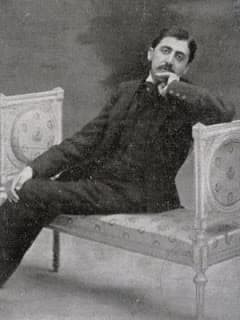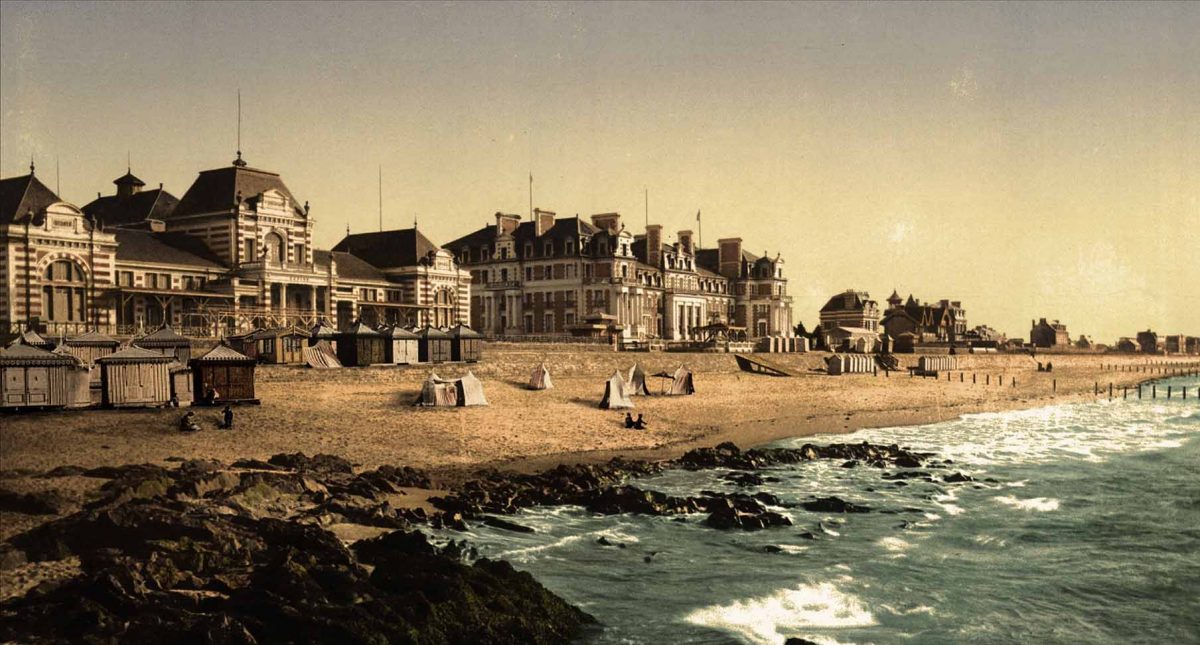Una pagina sinfonica di Vinteuil, già conosciuta al pianoforte e poi sentita suonare da un’orchestra, simile a un raggio di sole estivo che il prisma della finestra scompone al suo ingresso in una sala da pranzo buia, svelava come un tesoro inaspettato e multicolore tutte le gemme delle Mille e una notte. Ma come paragonare a un immobile sfavillio della luce ciò che era vita, movimento perpetuo e felice? Quello stesso Vinteuil che avevo conosciuto così timido e triste mostrava, al momento di scegliere un timbro, di accostarlo a un altro, delle audacie e, nel pieno senso della parola, una felicità su cui l’ascolto d’una sua opera non lasciava il minimo dubbio. La gioia suscitata in lui da certe sonorità, la moltiplicazione di forze ch’egli ne aveva tratta per trovarne di nuove, trascinavano ancora l’ascoltatore di scoperta in scoperta; o meglio, era lo stesso creatore a trascinarlo, attingendo dai colori appena trovati una gioia immensa che gli dava la forza di scoprire, di gettarsi su quelli ch’essi sembravano invocare, estasiato, trasalendo come all’urto d’una scintilla quando il sublime scaturiva spontaneo dall’intersezione dei “fiati”, ansimante, ebbro, sconvolto, vertiginoso nell’atto di dipingere il suo grande affresco musicale come Michelangelo quando, appeso a testa in giù alla sua scala, scagliava tumultuosi colpi di pennello sulla volta della Cappella Sistina. Vinteuil era morto da parecchi anni; ma, in mezzo a questi strumenti che aveva amati, gli era stato concesso di continuare, per un tempo illimitato, una parte almeno della sua vita. Della sua vita d’uomo, soltanto? Se l’arte non era davvero che un prolungamento della vita, valeva la pena di sacrificarle qualcosa? Non era, l’arte, irreale quanto la vita stessa?
Marcel Proust, La Prigioniera
Traduzione di G. Raboni per i Meridiani Mondadori
It has been suggested that the French composer Camille Saint-Saëns must be the real musician behind the mystery piece. And there is good reason for that assumption. In his earlier unfinished novel “Jean Santeuil,” written in the 1890s, Proust does identify the Saint-Saëns’ Violin Sonata No. 1. Proust was not a musician, but his description is sufficiently detailed to suggest a real model. César Franck and Saint-Saëns have been identified as possible candidates, but the second violin sonata by Johannes Brahms has also been suggested. A character in the novel makes reference to Beethoven’s Ninth and to Wagner’s “Meistersinger.” A French musicologist writes, “although we naturally think of Beethoven and Wagner, we should also understand that Brahms’ Ninth Sonata (Op. 100 is the ninth in chronology) is dubbed “Meistersinger” for its Wagnerian accents. And the little passage in F-sharp minor, which appears three times to end the piece, is thus described in Proust’s novel.

Marcel Proust
Recently, the sisters Maria and Nathalia Milstein have proposed an interesting hypothesis. They suggest that the musical theme that drove Charles Swann crazy comes from a less famous work, the Sonata for violin and piano in D minor by Gabriel Pierné. The artists suggest, “it is gorgeous and very much composed along the lines described in the book… We know that the famous little phrase comes back in the later movement, so hearing the Pierné sonata kind of fits.” As Proust writes, “Swann sought in the little phrase for a meaning to which his intelligence could not descend, with what a strange frenzy of intoxication did he strip bare his innermost soul of the whole armor of reason and make it pass unattended through the dark filter of sound!” Whatever his model, Proust granted music a pivotal role in a work of literature. “His vision of the potential unity and transformative power of the arts…shaped the European modernist tradition that followed him.” A leading literary critic writes, “Music as performance, as topic of debate, as catalyst of memory, emotion, and desire, plays an obbligato accompaniment to the interpersonal drama of the Proustian social world: its hilarity, its pathos, its vacuity, its sensuality, its cruelty.”
https://interlude.hk/marcel-proust-1871-1922-in-search-of-lost-time-and-the-mysterious-violin-sonata/
